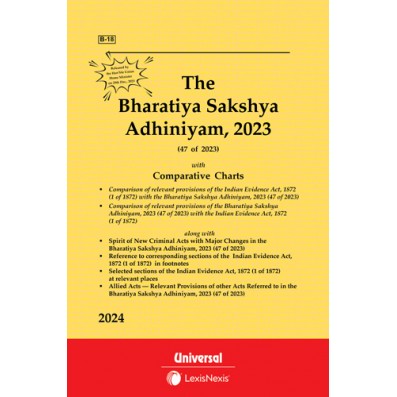Insurance has a deep-rooted history in India. Various forms of writing can be seen in Manusmriti, Dharmasastra, and Arthashastra. This blog unfolds the history of Insurance law and its development in India. It further discusses the regulatory body of Insurance in India, its roles and functions, and powers and responsibilities. We further delve into the different kinds of Insurance Acts that govern India. This blog also discusses the process of licensing and regulation of Insurance companies in India and gives us a glimpse of the different types of insurance, insurance contracts, and policies and key components of insurance contracts. It concludes with recommended Insurance law books and frequently asked questions.
What is Insurance Law?
Insurance laws frame a legal outline to govern the insurance business and its contracts. Insurance is a type of contract of indemnity in which an insurer indemnifies the other party against a loss that happens due to the happening of a contingent event. This segment of law is governed by the IRDAI. It covers various types of risks. Insurance is a contract of indemnity. It works on the principle of Uberrimae Fides which means in utmost good faith. It means that both the insurer and insured must disclose all the material facts about the person or property being insured. An entity that provides insurance is known as an insurer and the entity to which the insurance is provided is known as the insured.
Historical Development of Insurance Law in India
The evolution of Insurance law in India dates back to the year 1818 when India saw the advent of life insurance in India. The returns of insurance companies in India started getting published in 1914. In 1956, the Life Insurance Corporation came into existence. Concerning the General Insurance laws in India, in 1957 general insurance in India was formed and in 1973 it was nationalized. In April 2000, the Insurance Regulatory and Development Authority of India was established as a statutory body and in August 2000 it opened up the market in India.
Insurance Regulatory and Development Authority of India (IRDAI)
IRDAI stands for Insurance Regulatory and Development Authority of India. It was formed in the year 1999 under the IRDA Act. It came into effect on 19th April 1999. The IRDAI is a statutory body of India governing the insurance laws of India. The primary role of IRDAI is to protect and safeguard the interest of the policyholders of India and to focus on the development of the insurance sector in India. IRDAI has its own set of rules and regulations to govern the insurance laws in India. It is also vested with the power to investigate matters that involve malpractice by an insurance company. IRDAI also has the power to pass orders, give directions to other bodies, and make awards. IRDAI also works closely with government bodies like the Reserve Bank of India and the Securities and Exchange Board of India.
Roles and Functions:
It looks after the fair treatment and interest of the insurance holder. It frames regulations to ensure the operation of the industry without any ambiguity.
Powers and Responsibilities:
The major power and responsibility of the IRDAI is to promote and regulate the orderly growth of the insurance and reinsurance business in India. Its key responsibility is to protect the policyholders’ interest and encourage fairness in the insurance industry.
Insurance Laws and Acts in India
After the nationalization of both general and life insurance in India, many acts and legislations came into power to address the various types of insurance. This laid down the Acts to check the functioning of the insurance business in India. Different Acts govern different aspects of the insurance laws in India. Below are a few Acts and laws that govern the insurance sector in India.
The Insurance Act, 1938
The main purpose of this Act is to lay out a legal framework to carry out insurance business in India. This Act is the parent legislation that aims at consolidating and amending the previous insurance laws that existed during British rule. This Act lays down ground rules for the operation of the insurance business in India.
Related book: Insurance Act, 1938

Insurance Regulatory and Development Authority Act of 1999
This act establishes the statutory authority that will look into the protection of the rights and interests of the policyholders. The objective of this act is to promote and regulate the insurance industry in India. It also checks to create a fair business environment.
The Life Insurance Corporation Act, 1956
The main objective of this Act is to nationalize the life insurance business in India. This regulated the necessity for the certification of premium rate tables and periodical valuations of the companies.
Related Book: Life Insurance Corporation Act, 1956

The General Insurance Business (Nationalization) Act, 1972
The purpose behind the enforcement of this Act was to provide Indian insurance companies and other existing insurers shares to be enabled for the acquisition and transfer of for better economic needs. This was to ensure the safeguarding and development of the general insurance business. It was established to look into the best interest of the community and control businesses.
The Marine Insurance Act, 1963
This act focuses on the maritime industry. This legislation ensured that any loss or damage of ships, terminals, cargo, or any transport in which property was transferred or held between two points of origin and final destination was given coverage.
The Motor Vehicles Act, 1988
This Act has been legislated to govern road transport vehicles. This act compels the insurance of motor vehicles plying on roads. The owner is also bound by this act to insure the vehicle against third-party risks.
Related book: Motor Vehicles Act, 1988

Licensing and Regulation of Insurance Companies
The licensing and regulation of the insurance company gives it the authority to operate its business in India. This licensing and regulation is done by the IRDAI. The State insurance commissioner is in charge of the issuance of the license. Only after attaining the license, the insurance company can sell its policy and products to the general public.
Criteria for Licensing
The issuance of license and registration of an insurance company in India is governed by the IRDA Registration of India Insurance Companies (Seventh Amendment) Regulation, 2016. The eligibility criteria are that to get a license to have been a registered public company under the Companies Act, 2013, to have 100 crores of cash, and to build a reinsurance company you need to have 200 crores.
Regulatory Compliance for Insurance Providers
IRDAI compliance is required for any insurance provider to function in India because it is the regulatory body. This regulatory body safeguards the interest of the policyholders and ensures the uniform and fair functioning of all the insurance providers with clarity.
Types of Insurance in India
Insurance in India is segregated into various types depending upon the subject matter of the risk being insured. Insurance is available for living and non-living properties. Several factors are considered to bifurcate the various policies as per the property being insured. The types are broadly divided into two major categories: life and general insurance. It is crucial to select the right kind of policy as per the need to secure oneself from financial risk.
Life Insurance
Life insurance is a contract between an individual and a life insurance company. In this type of insurance, the beneficiary/beneficiaries are paid a sum of amount depending upon the premium on the demise/disability of the policyholder. This ensures the financial protection of the family members of the policyholder.
General Insurance
General Insurance is a type of insurance or agreement between the policyholder and insurer in which the insurance company protects the valuable assets of the policyholder from any unfortunate accident like fire, theft, burglary, etc.
Insurance Contracts and Policies:
All the contractual agreements in India are governed by the Indian Contract Act, of 1872. Insurance being a contract of indemnity is also guided by the same Act. But with evolving times and the rise of different situations, courts have laid down principles to balance the interest of both the insurer and the insured without going against the principle of the contract law.
Formation of Insurance Contracts:
Offer and Acceptance
Offer and acceptance in an insurance contract refers to the willingness of the policy-holder to accept a certain policy of the insurance company in exchange of a premium amount to cover a certain loss.
Premiums and Consideration
Premium is the amount of money paid by the policy-holder to the insurance company which is the consideration of the agreement in return for which the insurance company will do a certain kind of loss on the occurrence of a certain event.
Policy Terms and Conditions
Policy terms and conditions of the insurance are certain prerequisites of the agreement of the insurance which is to be abided by the policy-holder and on acceptance of which the premium is paid.
Key Components of Insurance Policies:
An insurance policy also has some key elements that look into how the policy will operate or function. As the insurance is a contract of indemnity, the contract is comprised of few essential components and so is the policy of insurance. Any insurance policy has three main components which are the premium, policy limit, and deductibles. The policy contains the premium that is to be paid by the insured, the subject matter that is being covered from risk or loss, up to what limit/amount the risk is being covered and under what conditions, and against what types of risk the subject is covered.
Declarations
The declaration of a policy tells you in detail about the entire policy. It discusses everything from who is covered to which all coverages are paid. It includes personal details of the policyholder, type of coverage, coverage limit, cost of coverage, and deductibles.
Insuring Clauses
This mentions the risk that is covered by insurance. This clause entails the risk for which the insurer is liable for paying and also outlines the scope of coverage.
Exclusions and Conditions
These are the clauses of an insurance contract that prevent or limit a liability or legal obligation in cases where a certain occurrence takes place.
Claims Process:
Claiming insurance is a process that has a few steps. There are a few steps involved which lay down a guideline as to how one can proceed to make an insurance claim. The claim of insurance involves the necessary steps to be taken by the insured to file the claim on the happening/non-happening of the event that caused damage to the property or subject matter that was insured.
Filing a Claim
Filing a claim in the insurance process refers to the request made by the policyholder to the insurance provider to do good the loss or reimburse against the losses that were supposed to be covered as per the insurance policy.
Investigation and Settlement
When a claim is filed by the policyholder, a dedicated team of the insurance company investigates the matter and the loss that has happened and checks for the fulfillment of certain parameters. If they are ticked off, the claim is settled. In situations where the parameters are not met, the claim might also be rejected. The investigation needs to be done within 90 days of the claim intimation. The settlement needs to be done in 30 days thereafter.
Dispute Resolution Mechanisms
Many times, when in the investigation process, the necessary elements are not met, the claim can be rejected by the insurance provider. In these cases, the parties resort to dispute resolution mechanisms. Dispute resolution mechanism in insurance of what happens through arbitration. In this method, the parties of insurance i.e. the policy-holder and the insurance provider sit amicably to resolve the issue in the presence of a third party.
Recommended books for further reading:
Commentary on The Insurance Regulatory and Development Authority Act by S K Sarvaria and Apoorv Sarvaria

This is an illustrative book that gives a detailed overview of the features and regulations of the IRDA. It also gives the details of the insurance laws in India. This book is a reference and a great guide for scholars, practitioners, and even students.
Principles of Insurance Law by M N Srinivasan and K Kannan

This is not just a guide but gives a critical overview of the insurance law. This includes all the aspects of the insurance law including the general principles, practices, procedures, and special chapters on tax planning.
Law of Insurance by B N Banerjee & S K Sarvaria

This is a comprehensive book that gives an exposure to all kinds of insurance laws. It includes all the laws of different insurances that are followed in India along with commentaries on the Motor Vehicle Act and the latest amendments.
Conclusion
The insurance laws in India are growing with the evolving times and because India as an economy is transitioning, all the assets have an economic value attached with it. Insurance acts as an important tool to provide security. Insurance acts as a useful instrument to indemnify against a loss. IRDAI as a regulatory body governs the policies and safeguards the interest of people in the insurance business. This law is a tool to protect and maintain the legal and regulatory architecture of the country.
FAQs
- What is the General Insurance Act in India?
With the goal of better serving the needs of the economy, the General Insurance Act was introduced to facilitate the acquisition and transfer of shares in Indian insurance companies and other related undertakings of various existing insurers.
- What was the first insurance act in India?
The Indian Life Assurance Companies Act, of 1912 was the very first insurance act in India.
- What is the Insurance Laws Amendment Act 2015 in India?
The Insurance Laws Amendment Act, 2015 removes archaic and redundant provisions present in the legislation. It also incorporates certain provisions to provide the Insurance Regulatory and Development Authority of India with some flexibility to discharge the function effectively as well as efficiently.






























































